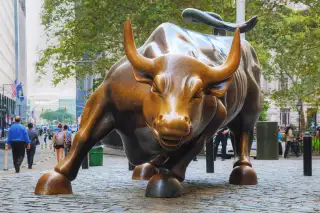This Stock Market Indicator Has Been Reliable for 115 Years. Now It's Saying You Should Buy

Amid the growing number of economic signs and worrisome predictions pointing to end of the bull market, one old-school market indicator is flashing a big, blinking "buy" sign.
Developed more than 115 years ago, "Dow Theory" — created in part by Charles Dow, the founder of the Wall Street Journal — is considered the oldest stock market indicator that's still followed by a broad swath of the investing public. It warned of trouble in late 1999, for instance, a few months before the dot-com crash in March 2000. And it sent a buy signal in April 2009, almost exactly at the start of the current eight-year-old bull market.
At its core, the theory looks for two major Dow Jones stock indexes — the Dow Jones industrial average and the Dow Jones transportation average — to "confirm" a trend on Wall Street. So for a bull market, for instance, you'd want to see record highs in both. As the theory goes: If the economy were truly humming, railroads and shipping companies that are needed to move goods across the country would be just as busy as the manufacturers of those products.
Well, transportation stocks hit new record highs on Monday, putting the Dow Transports right in line with the Dow Jones industrial average for a bullish outlook.
"Over the last 15 to 20 years, people have come up with many new-fangled indicators that they think are better at forecasting the market," says James Paulsen, chief investment strategist for The Leuthold Group. "But the reality is that some of the best indicators have been around for 100 years, and there's a reason they’ve been around for 100 years."
Paulsen says he wouldn't be surprised if this bull market — which at eight years of age is already the second-oldest rally in modern stock market history — continues to move ahead for another 12 to 24 months.
To be sure, stocks are more expensive today, relative to the earnings that corporations are generating, they they've been historically, Paulsen concedes.
He notes, however, that "valuations alone don't typically upend a bull market. You need a catalyst like a recession" to topple stocks. Moreover, he adds, "it's hard to be convinced that a recession is lurking around the corner. And if we don't have a recession, we won't have a sustained bear market. We might have a short-term correction, but not a sustained downturn."
This stock market also lacks the economic excesses that plagued past bubbles in stocks, Paulsen says. As he points out: "We don’t have runaway lending and borrowing, there's no runaway investments, and companies can't be accused of over-hiring."